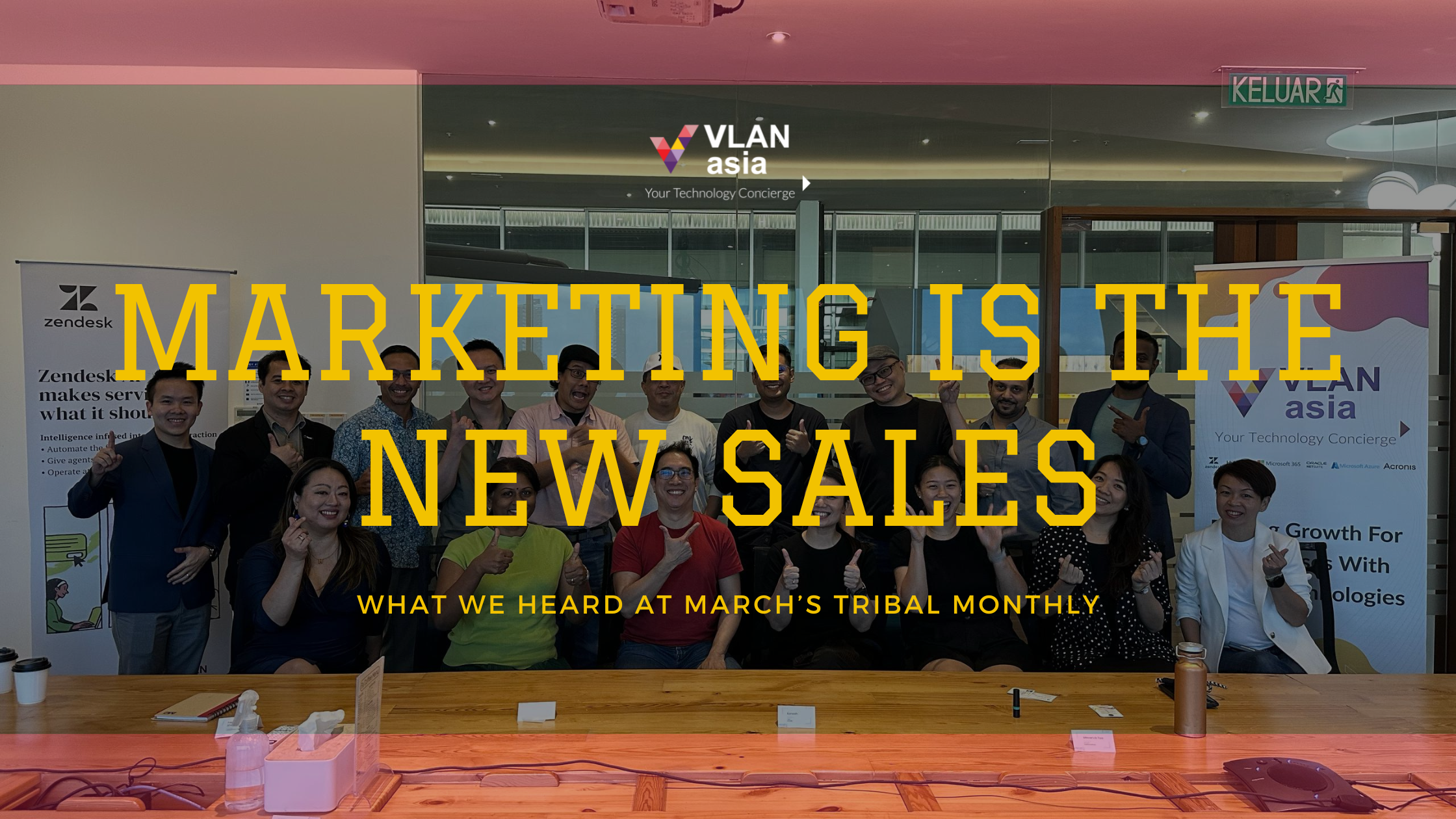Marketing is the New Sales – What We Heard at March’s Tribal Monthly

The title stirred reactions right away. Some nodded. Some smirked. A few tilted their heads like, “Really?” Which is exactly what we wanted.
Our March session of Tribal Monthly gathered business owners, sales leaders, marketers, tech folks, and a few quiet observers who later turned out to have the sharpest takes. The room was small, as always. That's by design. Fewer people, better conversations.
The topic: “Marketing is the New Sales.”
Lance kicked things off by saying what many of us have felt for a while: selling isn’t what it used to be. People don’t pick up calls. Cold emails sit unread. Buyers don’t want to be talked into anything—they want to look you up, browse quietly, then decide if you’re even worth talking to.
And before anyone could argue, he added: “By the time they speak to sales, the deal’s already 90% decided.”
Some agreed. Some didn’t. But everyone had stories.
A few years ago, you could rely on a smooth-talking sales rep to carry a deal. Now? If your LinkedIn page is dead, your website hasn’t been touched since 2020, and there’s no social proof or fresh content, you’re invisible.
That was echoed by a few folks in the room. Michelle from Parlo said they’re in the middle of rethinking how they show up digitally. After decades of being known in travel, they’re now dealing with a buyer who googles everything and expects a clean, fast, trustworthy experience before even asking about a package.
They’re not alone. Several participants shared how they’re being forced to rethink their sales funnel. Not because their salespeople can’t close, but because people aren’t even reaching the door unless marketing lays the track first.
It wasn’t just about getting leads, though. The discussion turned to how much weight marketing carries now in shaping whether people believe you're worth their time.
One person, Stefan, said that showing up with a case study from a major client builds more credibility than any opening sales script ever could. Another mentioned that without strong content online, they lose to competitors even when their product is better—just because the other brand “feels” more put together.
It’s not flashy campaigns that are winning. It’s clarity. Relevance. Consistency.
But no, sales isn’t dead. Not even close.
Juarez reminded everyone that in his world—training, services, and government contracts—relationships still matter. A lot. But the way those relationships begin has changed. It used to start with a meeting. Now it starts with a Google search. If you don’t look the part, you don’t get the coffee.
That’s where the discussion got most interesting: marketing and sales aren’t at odds. They just need to stop behaving like separate planets.
Lionel, who moved from marketing into sales at LinkedIn, talked about how frustrating it is when those two teams don’t share data, tools, or even direction. The room agreed—sales should be giving marketing real feedback from the ground. Marketing should be sending better-qualified leads to sales. Most aren’t.
Maverick brought in the AI curveball. He said in a few years, we’ll see AI agents handling procurement decisions. Two bots negotiating terms. No emotions. No dinners. No “follow-up next week.”
He wasn’t being dramatic. He was saying: if we think buyers are distant now, just wait.
The way forward, he argued, is to stop thinking in old categories. Don’t catch up to what others are doing. Skip ahead. Make your website smarter. Let your content do the first five conversations. Train your team to close, not chase.
We asked the group what they were doing differently.
One team was redesigning their internal events to speak directly to decision-makers. Another was using LinkedIn posts from their leadership team as a way to build trust fast. A few were building AI-assisted tools to help customers generate their own quotes or filter down options on their websites.
One of the quieter voices in the room, a medical equipment supplier, asked for ideas to market to hospitals. Her business depends on face-to-face rapport. She’s done the groundwork. Built trust the hard way. But now, she’s wondering how to scale that in a world that prefers clicks over conversations. Several jumped in. Suggestion after suggestion. That’s what Tribal Monthly is for.
We wrapped up with a question we always ask: “What are you walking away with?”
Answers ranged from “I need to show up more online” to “Time to rethink how we structure our team.”
Ours? The way people buy has changed. Sales alone can’t carry the weight anymore. Marketing doesn’t just support sales. It enables it. And for most companies in the room, that means rewiring how both teams work together.
It was one of our liveliest sessions yet. No slides. No speeches. Just sharp people sharing what’s working and what’s not.
You should come next time.
